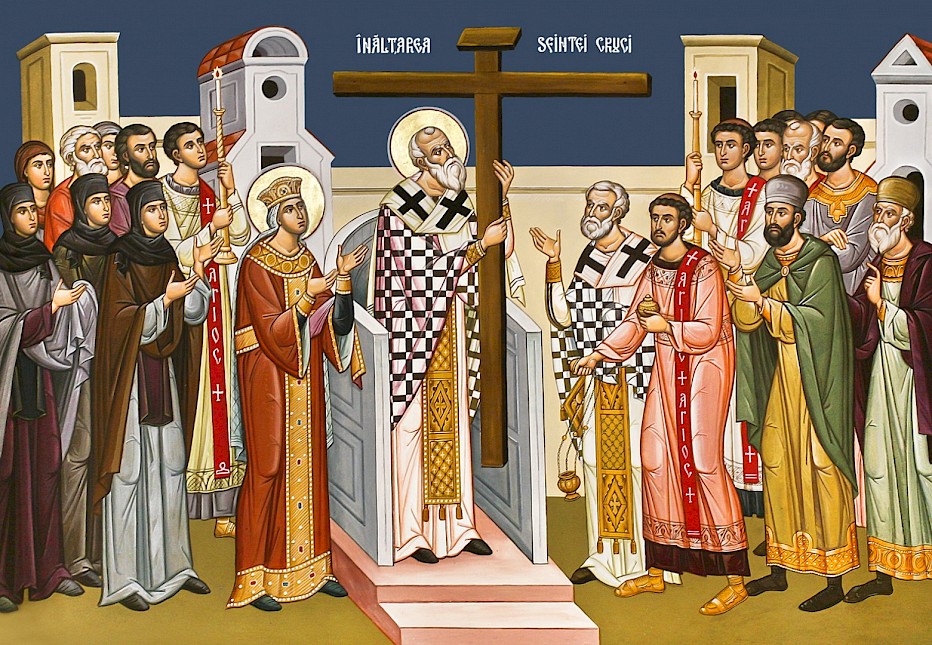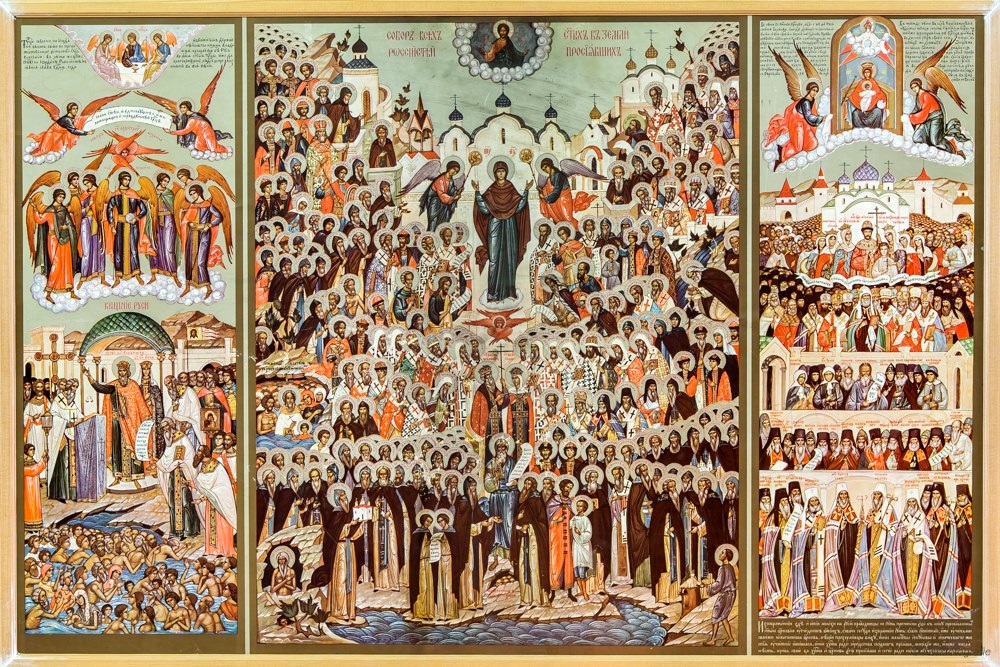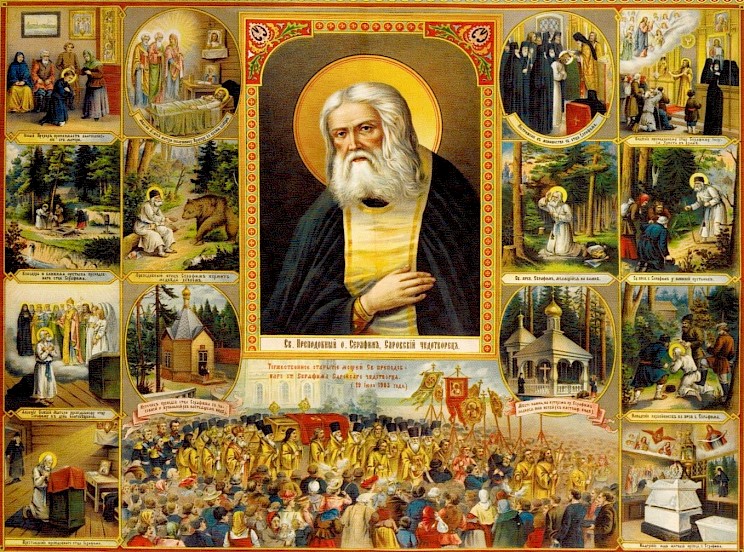
In the Name of the Father and the Son and the Holy Spirit.
As we celebrate the Epiphany, we remember how God revealed himself as the Trinity, that Jesus appeared to the people as Christ. Where did Christ appear Hos did He begin His mission? Did He enter a great city and reveal Himself in His glory? Did He ascend a great mountain as many thousands of people beheld Him from below, wondering at the miracle? No! Christ went into the wilderness, to the Jordan River, where John was baptizing the people. John preached repentance, and called upon sinners, in a sign of repentance, to be baptized in the Jordan. And it was as a sinner that Christ came and asked for baptism. Yet He had no sin. John was afraid: “I have need to be baptized of thee, and comest thou to me? And Jesus answering said unto him, suffer it to be so now: for thus it becometh us to fulfil all righteousness” (Matthew 3:15). Adam sinned through pride, he wished to elevate himself, to become like God. But Christ cam to fulfill the truth of God, to correct Adam’s pride through humility. Christ entered the water and received baptism from His servant. Trembling, John placed his hand upon his God and Master, and Christ humbly bowed His head. Christ’s humility opened up the heavens, and the voice of God the Father boomed forth: “This is my beloved Son, in whom I am well pleased” (Matthew 3:17). This is My Son, Who humbled Himself in order to fulfill My will, My true Son, Who humbles Himself in order to elevate mankind. Christ’s meekness opened the heavens and revealed to mankind the Trinitarian nature of God.
19.01.2025Read more

The day of the Holy Apostles Peter and Paul is the culminating feasts of the Gospel. Although the last event in the life of Christ which is related in the Gospel as His Ascension into heaven (Mark 16:19; Luke 24:51), the preaching of the Apostles is closely bound up with the Gospel. The Gospel tells us of their being chosen, and the Gospel indicates beforehand the end of Apostolic activity.
Telling of the appearance of Christ on the sea of Tiberias and the restoration to apostleship of Peter, who by his triple confession corrected his triple denial, the Apostle and Evangelist John the Theologian speaks also of the prediction to the Apostle Peter concerning the end of his struggle. When thou shalt be old, thou shalt stretch forth thy hands, and another shall gird thee, and carry thee whether thou wouldest not. This spoke He, signifying by what death he should glorify God (John 21:18-19).
It was not pleasing to the Lord then, to reveal the face of each of the other Apostles, although, when sending them to preach, He predicted to them, the persecutions that awaited them (Matt. 10:17-36). Now, to the question of Peter about John, Christ replied: If I will that he tarry till I come, what is that to thee? Follow thou Me (John 21:22).
12.07.2024Read more

In the Prophet Ezekiel (9:6), it is said that when the Angel of the Lord was sent to punish and destroy the sinning people, it was told him not to strike those on whom the "mark" had been made. In the original text this mark is called "tau," the Hebrew letter corresponding to the letter "T," which is how in ancient times the cross was made, which then was an instrument of punishment.
So, even then, it was foretold the power of the Cross, which preserves those who venerate it. Likewise, by many other events in the Old Testament the power of the Cross was indicated. Moses, who held his arms raised in the form of a cross during the battle, gave victory to the Israelites over the Amalekites. He also, dividing the Red Sea by a blow of his rod and by a transverse blow uniting the waters again, saved Israel from Pharaoh, who drowned in the water, while Israel crossed over on the dry bottom (Exodus, ch. 14, 17).
Through the laying on of his hands in the form of a cross on his grandsons, Jacob gave a blessing to his descendents, foretelling at the same time their future until the coming of the "expectation of the nations" (Genesis, ch. 48).
27.09.2023Read more

The Day commemorating the saints who have shown forth in the Russian land points to that spiritual heaven beneath which the Russian land was founded and lived.
Before the holy Prince Vladimir, there lived on the Russian land separate, pagan tribes that warred with one another. The holy Prince Vladimir brought them a new faith, a new consciousness and meaning of life, a new inner spiritual state; he gave them a new spirit of life that united everyone, and thus a single nation was formed.
The very existence of the Russian nation is tied to the begetting of spiritual life within it, with the assimilation of the fundamentals of a Christian world-view. It is senseless to seek the meaning and purpose of life in earthly life, which ends with death. One must strive to acquire the Divine, grace-filled, eternal life, and then this temporal, earthly life will arrange itself as well: Seek ye first the Kingdom of God and his righteousness; and all these things shall be added unto you (Matt. 6:33).
04.07.2021Read more

In the name of the Father, the Son, and the Holy Spirit!
'They will sing Pascha in the summer', they once said in Sarov. Seventy years passed from the death of the man about whom these words were pronounced, and on July 19, 1903, all of Rus' resounded with hymns of praise, glorifying God and His saint. Truly, all of Rus' exalted then as on the Day of Holy Pascha-even more so.
Terrible days were to come for Russia, but the memory of St Seraphim neither died nor weakened. Russian people continue to appeal to him and glorify him, both in the suffering Homeland and throughout the ends of the world where they are scattered. Even other nations are becoming familiar with St Seraphim; his Life (biography) is being translated into various languages, evoking not only admiration, but also, in many, the striving to apply in their own lives the lessons given to us by his life. Thus, despite the changes that have taken place in the world, the memory of St Seraphim not only does not fade, but it remains a lamp that shines ever brighter to humanity.
01.08.2019Read more





